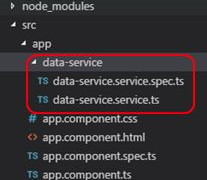Angular
Sean Chou

What is Angular ?
Angular 是一款開源 JavaScript 函式庫
用來協助單一頁面應用程式運行。
目標是透過MVC模式
增強基於瀏覽器的應用,使開發和測試變得更加容易。
What's more ?
ALL-IN-ONE
TypeScript
Component Thinking
Component Thinking
Component A
Component A
Component B
Component B
Component B
Component B
Component C
Component D
Component E
Component B
Environment
- node 6.9.x
- npm 3.x.x
- Angular Cli
npm install -g @angular/cliRun your project
ng new my-appCreate a new project
cd my-app
ng serve --o
Architecture
Modules
- Every Angular app has at least one NgModule class, the root module, conventionally named AppModule
- 可以將多個 component 打包近一個 modules,提供其他的 app 使用
-
Attribute:
- declarations
- providers
- imports
- exports
- bootstrap
Root module
/* app.modules.ts */
// import 這隻 webapp 會用到的 package,最基本的 BrowserModule 和 NgModule
import {BrowserModule} from '@angular/platform-browser';
import {NgModule} from '@angular/core';
// 入口點的 component 也要 import 進來
import {AppComponent} from './app.component';
// 定義這個 module 的 metadata
@NgModule({
declarations: [AppComponent], // 宣告這個 app 的 component
imports: [BrowserModule], // 要使用到的 package
bootstrap: [AppComponent] // 表示這個 webapp 的入口點
})
export class AppModule {}Components
-
Components
- Control view,需要與 Templates & Metadata 搭配
-
Templates
- 這個 component 的長相
- 使用許多 directives 組合而成
-
Metadata
- @Component 宣告在 component 裡面
- Metadata 用來綁定 HTML template 、CSS 和 Component
Root Component
/* app.component.ts */
import { Component } from '@angular/core';
@Component({
selector: 'my-app',
template: `<h1>{{title}}</h1>`,
styles: [`h1 { font-weight: normal; }`]
})
export class AppComponent {
title = 'Hello World';
}- selector: 目標的 tag
- template: component 的長相
- styles: component 的 style
Refactor your code
/* app.component.ts */
import { Component } from '@angular/core';
@Component({
selector: 'my-app',
templateUrl: './app.component.html',
styleUrls: [ './app.component.css' ],
})
export class AppComponent {
title = 'Hello World';
}<!-- app.component.html -->
<h1>{{title}}</h1>/* app.component.css */
h1 { font-weight: normal; }Define a data model
/* masterData.ts */
export class MasterData {
key: string;
value: string;
}import { Component } from '@angular/core';
// 從同層目錄結構底下 import MasterData
import { MasterData } from './masterData';
// 用這個 model 來宣告一個新的資料陣列
const MASTERS: MasterData[] = [
{ key: 'Hello1', value: 'World1' },
{ key: 'Hello2', value: 'World2' },
{ key: 'Hello3', value: 'World3' },
];
@Component({
selector: 'my-app',
templateUrl: './app.component.html',
styleUrls: [ './app.component.css' ],
})
export class AppComponent {
title = 'Hello World';
// 就可以在這裡使用
datas = MASTERS;
}use in component
Multiple Component
/* ui.select.component.ts */
import { Component, Input } from '@angular/core';
import { MasterData } from './masterData';
@Component({
selector: 'ui-select',
templateUrl: './ui.select.component.html',
})
export class UiSelectComponent {
// 這裡有一個 input 接口,讓外界可以傳資料進來這個 component
@Input() data: MasterData[];
}<!-- ui.select.component.html -->
<select>
<option *ngFor="let d of data"
id="{{d.key}}">
{{d.value}}
</option>
</select>/* app.component.ts */
import { Component } from '@angular/core';
import { MasterData } from './masterData';
@Component({
selector: 'app-root',
templateUrl: './app.component.html',
styleUrls: ['./app.component.css']
})
export class AppComponent {
// 利用我們定義好的 MasterData model 來宣告變數
bindingData: MasterData[];
constructor() {
// 先假造資料
this.bindingData = [
{key: 'A1', value: 'valueA'},
{key: 'B1', value: 'valueB'}
]
}
}<!-- app.component.html-->
<ui-select [data]="bindingData">ui-select component
Create a Service
ng g s DataService
/* data-service.service.ts 部分內容 */
import { Injectable } from '@angular/core';
@Injectable()
export class DataServiceService {
constructor() { }
}/* app.module.ts 部分內容 */
...
import { DataServiceService } from './data-service/data-service.service';
...
@NgModule({
...
providers: [DataServiceService],
...
})
export class AppModule { }Service
decorator: @Injectable
Http Module
The app will depend on the Angular http service, which itself depends on other supporting services.
The HttpModule from the @angular/http library holds providers for a complete set of HTTP services.
/* app.module.ts */
import {BrowserModule} from '@angular/platform-browser';
import {NgModule} from '@angular/core';
import {AppComponent} from './app.component';
import {HttpModule} from '@angular/http';
@NgModule({
declarations: [
AppComponent
],
imports: [
BrowserModule,
HttpModule // 要在這裡 import HttpModule
],
bootstrap: [AppComponent]
})
export class AppModule { }http + promise
/* post.servcie.ts */
import {Injectable} from '@angular/core';
import {Http} from '@angular/http';
@Injectable()
export class PostService {
private getPostsURI = 'http://xxx/api/get';
constructor(private http: Http) { }
getData = () => {
return this.http.get(this.getPostsURI)
.toPromise()
.then(response => response.json())
.catch(this.handleError);
}
private handleError(error: any): Promise<any> {
console.error('An error occurred', error); // for demo purposes only
return Promise.reject(error.message || error);
}
}this.postService.getData();Use it in component!
Routing
/* app.module.ts 部分內容 */
...
import { AppRoutingModule } from './app-routing.module';
...
imports: [
...
AppRoutingModule
],
.../* app-routing.module.ts */
import { NgModule } from '@angular/core';
// import RouterModule and Routers
import { RouterModule, Routes } from '@angular/router';
// import 兩個不同長相的 component
import {ContentComponent} from './content/content.component';
import {PictureComponent} from './picture/picture.component';
// 這是 routing 的規則
const routes: Routes = [
// 當 root path 的時候自動導到 /content
{ path: '', redirectTo: '/content', pathMatch: 'full' },
// 當 host:port/picture 時,使用 PictureComponent 渲染頁面
{ path: 'picture', component: PictureComponent },
// 當 host:port/content 時,使用 ContentComponent 渲染頁面
{ path: 'content', component: ContentComponent }
];
// 在這裡定義 import & export
@NgModule({
imports: [ RouterModule.forRoot(routes) ],
exports: [ RouterModule ]
})
export class AppRoutingModule {}Routing
Build your project
ng buildBuild production
ng build --prodng build --prod --base-href "project"Build with parameters
Angular 4 Introduction
By Sean Chou
Angular 4 Introduction
A basic concept of Angular
- 303

